STAR TRADING G4 LED bulbs
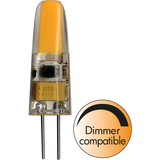
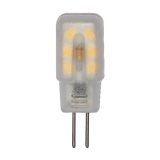
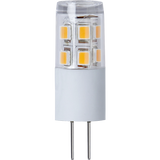

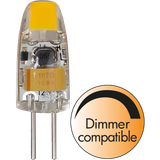

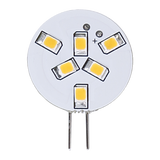


star trading g4 led bulbs range and formats
G4 (two-pin, 4.0 mm pitch) capsules cover tiny sconces, furniture spots, plinth lights, vitrines, and miniature downlights without changing trims. Three body styles do the work: ultra-compact silicone or glass capsules (near-omni 270–320°), flat “disc” boards for forward throw (≈110–140°), and small tower layouts where a tighter hot spot helps. Typical nodes: 1.2 W ≈ 110–140 lm, 1.8 W ≈ 170–210 lm, 2.5–3 W ≈ 250–330 lm, 4 W ≈ 380–450 lm. Colour sets 2700/3000/4000 K; CRI 80 is standard, with CRI 90 (often R9>50) stocked for wood, fabrics, and skin tones. Operating window usually −20…+40 °C; keep Tc ≤ 85 °C in enclosed cups.
star trading capsule led lamps optics and builds
Capsules read “point-source” and look right in visible arms; opal jackets calm luminance for mirrors and close sightlines. Discs put light on the plane—perfect for shelves and counters—while towers lift centre intensity in shallow trims. Project bins hold ≤ 3 SDCM so colour stays consistent across phases. Check overall height: micro capsules ~25–38 mm; short discs ~35–45 mm. For very tight fittings, planners often specify star trading small g4 led bulbs—note envelope height on the room sheet so lamps don’t protrude past cages.
star trading low voltage g4 lighting drivers and wiring
All G4s here are 12 V. Many accept AC/DC; some are DC-only (polarity marked). Legacy electronic transformers need a minimum load; small groups behave better on a 12 V constant-voltage LED driver sized ≥ 1.25× connected wattage. Keep secondary runs short and correctly gauged—target ≤ 0.5 V drop end-to-end or low-end dimming will stall. Trailing-edge (RC) channels run quiet; leading-edge (RL) can buzz on tiny loads. Aggregate a few heads per channel for smooth 5–10 % low-end. Where drawings group tiny sources as star trading miniature led bulbs, match driver type and injection points so scenes dim evenly.
Fitment, thermal behaviour, and standards
Pins follow IEC 60061; use heat-rated lampholders (≥ T120…T150) and keep insulation off the crown. In metalware, insulating washers preserve creepage/clearance. Safety/marking EN/IEC 62560 (where applicable); LED modules EN/IEC 62031; control gear EN 61347-2-13 with IEC 62384; EMC EN 55015/EN 61547; mains quality EN 61000-3-2/-3-3; photobiological safety EN 62471 (RG0/RG1 on typical outputs). Source packages reference LM-80 with TM-21 life projections—expect L70/L80 ~25–50 kh at Ta 25 °C depending on body and airflow.
star trading decorative g4 lamps series and use-cases
Mini Capsule — clear for sparkle in crystal, opal for mirrors; 150–250 lm at 2700 K reads warm and natural when dimmed.
Flat Disc — the task piece (200–300 lm at 3000/4000 K); lands 300–500 lx on a 0.6–0.8 m deep shelf without scallop.
Tower — a touch more punch (250–350 lm) in shallow cups and vitrines; add a thin diffuser if glass flare shows.
If the tender says star trading g4 retrofit led lights, lock five items on one line—envelope, lumen node, CCT/CRI, driver path (AC/DC or DC-only), and overall height—so crews pull the right carton first time.
Quick application map (practical picks)
- Chandeliers / crystal arms: clear capsule, 2700 K, CRI 90, 150–250 lm; RC dim for quiet low-end.
- Joinery / plinths / undershelf: disc, 3000/4000 K, 200–300 lm; aim toward the front edge for even planes.
- Display cases: tower, 3000 K, 250–350 lm with micro-diffuser to tame reflections.
Where catalogues label very compact pieces as star trading g4 led bulbs, keep envelope height and “enclosed-OK” in the table; look and life both depend on them
Wiring cheatsheet installers actually use
- Up to ~2 m secondary: 2×0.75 mm² is fine for 10–20 W loads.
- 2–5 m: move to 2×1.5 mm² and plan mid-injection.
- Keep twin-lead runs short; long tails shave dimming headroom and can tilt CCT at low levels.
Selection checklist for planners
- Task & beam — capsule (sparkle), disc (forward throw), tower (punch).
- Photometry — 150–250 lm decorative; 250–400 lm small task.
- Colour — 2700/3000/4000 K and CRI/R9 policy per zone.
- Driver topology — transformer minimum load vs 12 V CV; RC vs RL dimmer.
- Geometry & thermal — overall height, holder T-class, airflow around the crown.
- Docs — note ≤ 3 SDCM for phased deliveries so colour doesn’t drift.
Procurement lines that avoid re-picks
Write: body + W/lm + CCT/CRI + driver note + overall height + dimmer type + enclosed-OK.
Example: “Disc 2.5 W 280 lm 3000 K CRI 90, 12 V DC, H = 38 mm, RC dim, enclosed-OK.”
For décor-led briefs, a single line such as “clear capsule 2700 K CRI 90” signals intent fast and ties back to the series map.
Bankoflamps B2B
We align envelopes, lumen nodes, drivers, and dimmer topology to your drawings; live EU stock is visible by warehouse. Quotes land in ~1 hour with EAN/MPN, SDCM/flicker notes, and accessory codes. Orders go by manufacturer code; price lists carry validity dates; we track lead times and consolidate shipments by zone across France, the Baltics, Germany, Spain, Italy, Belgium, and the Netherlands. Post-payment up to 30 days is available for approved accounts.